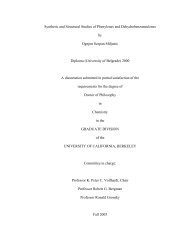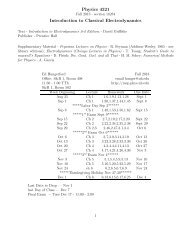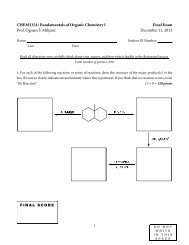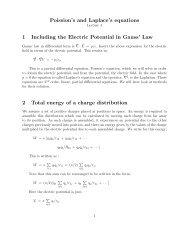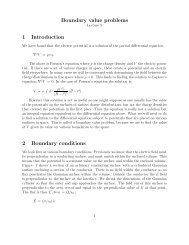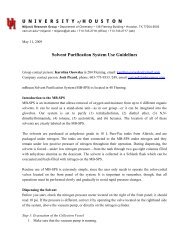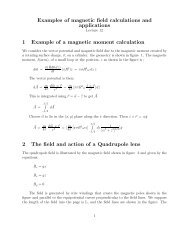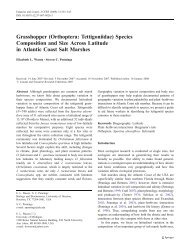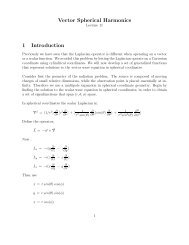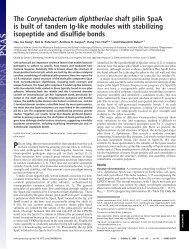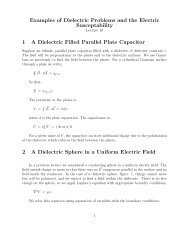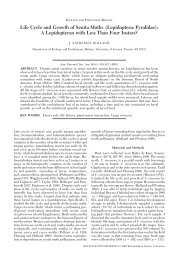Scattering 1 Classical scattering of a charged particle (Rutherford ...
Scattering 1 Classical scattering of a charged particle (Rutherford ...
Scattering 1 Classical scattering of a charged particle (Rutherford ...
Create successful ePaper yourself
Turn your PDF publications into a flip-book with our unique Google optimized e-Paper software.
zn^θyvtρxvρFigure 11: The geometry used for synchrotron radiation <strong>of</strong> an ultra-relativistic <strong>particle</strong>Choose a coordinate system as shown in fig. 11 and substitute for the velocity and the distancefrom the retarded point to the present point, rAlso;ˆn × (ˆn × ⃗ β) = βˆn × (ˆn × [ˆǫ parallel sin(vt/ρ) + ˆx cos(vt/ρ)])ˆn × (ˆn × ⃗ β) = β(−sin(vt/ρ) ˆǫ ‖ + cos(vt/ρ) sin(θ) ˆǫ ⊥ )ˆn · ⃗r = (ρ/c)sin(vt/ρ) cos(θ)Integration proceeds in the ultra-relativistic approximation, β ≈ 1. The result isd 2 Iω dΩ = 27 e2 c λ c32π 3 cρ λ γ8 [1 + (γψ) 2 ] 2 [K2/3 2 (η) +In this equationλ c = 4πργ−33η = λ c[1 + (γψ) 2 ] 3/22λK j i/2 are modified Bessel functions <strong>of</strong> the 2nd kind.(γψ)21 + (γψ) 2 K 2 1/3 (η)]13 Virtual photonA <strong>charged</strong> <strong>particle</strong> <strong>of</strong> momentum ⃗p I and energy E I cannot decay into a photon and a <strong>charged</strong><strong>particle</strong> having the same mass. Such a process is shown in fig. 12. If we attempt <strong>of</strong> conserve20




